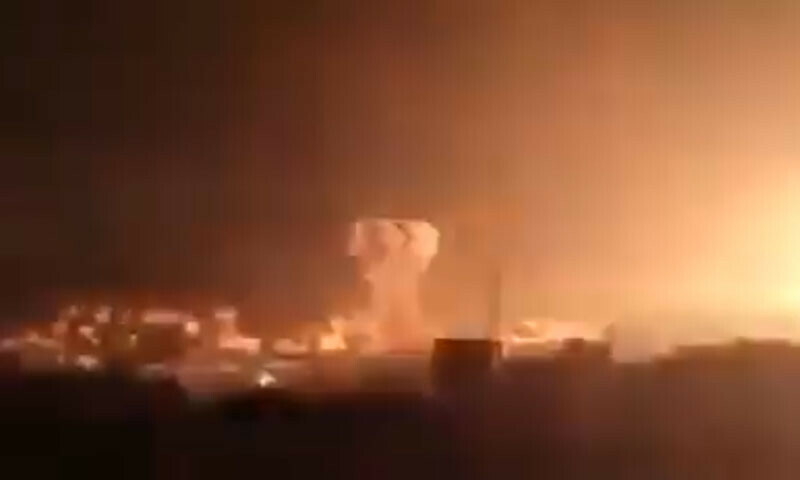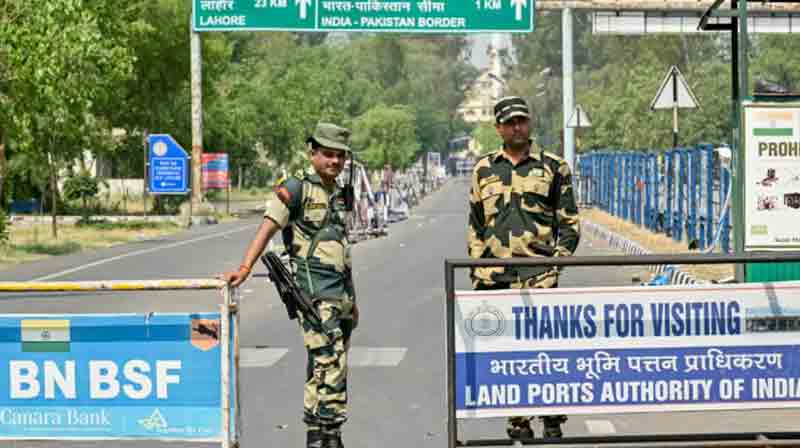Political and military establishment of India continues to openly deny the loss of five fighter aircraft, including three of its most sophisticated Dassault Rafale jets, that were shot down by the Pakistan Air Force in a series of high-stakes aerial engagements over the subcontinent, despite mounting and increasingly indisputable evidence.
Even as visible evidence of wreckage thought to be from a downed Rafale comes from Punjab’s Bathinda area, New Delhi continues to defiantly reject these losses despite accumulating videos, photographic documentation, and eyewitness accounts.
Recently, debris from what looks to be an IAF Rafale fighter was found in Aklian hamlet, close to Goniana Mandi, which is within range of frontline Indian Air Force facilities and only 80 kilometers from the Pakistani border. These photographs have been making the rounds on the internet.
Today, the #Indian Air Force finally recovered wreckage of its downed Rafale EH (BS001) in Aklia village near Goniana Mandi, Bathinda. https://t.co/96eZF6jf0p pic.twitter.com/00J5nO8XFR
— Babak Taghvaee – The Crisis Watch (@BabakTaghvaee1) May 11, 2025
The collision and post-crash combustion consistent with a high-speed shootdown are confirmed by video footage that has been widely circulated on social media platforms. It clearly shows what appears to be the engine casing and nozzle components of a Rafale aircraft.
These two videos show the sad moment when the #IndianAirForce‘s Rafale EH BS001 (the first of its kind) crashed and impacted the ground at Bathinda, #India after it was hit by a PL-15 missile launched by a #PakistaniAirForce‘s J-10CE on May 7, 2025. Its pilots launched lots of… pic.twitter.com/VtCv2lcf7X
— Babak Taghvaee – The Crisis Watch (@BabakTaghvaee1) May 11, 2025
Villagers found wreckage bearing the serial number “BS-001,” which is believed to match a Rafale aircraft from the IAF’s fleet—more precisely, the early-delivery batch integrated into No. 17 “Golden Arrows” Squadron at Ambala Air Force Station—which provided conclusive visual proof.
It is more likely that the aircraft had either just taken off or was returning when it was hit by Pakistani air defenses or air-to-air missile systems—possibly the PL-15 or SD-10B carried aboard PAF’s JF-17 Block III or J-10C jets—given the crash site’s proximity to a significant IAF Rafale base.
According to local Indian media, which cited eyewitnesses, the fighter jet was seen flying abnormally low before crashing into a nearby wheat field. Witnesses said they heard a loud sonic boom just before the accident.
According to Bathinda district officials, a secondary explosion caused by leftover fuel or munitions occurred as people approached the debris, killing one civilian and wounding another.
Indian security officials launched quick-response search efforts after several eyewitnesses reported that the pilot had safely ejected and was later observed landing by parachute in Ganga village, which is about 4 to 5 kilometers from the crash site.
Air Marshal A.K. Bharti, a senior official in the Indian Air Force, responded cryptically when asked to directly address the claims of losing five fighter aircraft, including three French-made Rafales: “Losses are part of warfare.” Bharti declined to provide any details.
Although the Ministry of Defence in New Delhi has not formally confirmed it, many regional defense analysts interpret Bharti’s well-crafted response as a tacit acknowledgment, confirming their concerns that India sustained many combat losses in a short period of time.
In addition to the Rafale losses, Pakistani officials also asserted that they shot down a MiG-29 and a Su-30MKI, two important parts of India’s multirole fleet that were used extensively during Operation Sindoor.
More images and videos of wreckage thought to be from a Su-30MKI fighter in the Akhnoor region of Jammu have now appeared online, but Indian officials have not responded to these reports or confirmed them.
In defiance of local eyewitness reports and social media evidence showing at least one pilot ejecting close to Ganga village, Air Marshal Bharti maintained during the same news event that all IAF pilots had “returned safely” to their bases.
Additionally, Bharti said that “there is no wreckage of Pakistani aircraft on Indian land” since Indian planes had effectively intercepted and prevented Pakistani jets from entering Indian airspace.
He said, “We shot down multiple Pakistani aircraft,” although the Indian side has not provided any tangible proof to support the claim, such as debris, flight data, or pilot capture.
In contrast, the Pakistan Air Force has categorically denied any aircraft losses, claiming that its fighters returned unharmed from every operation. To date, no verified open-source or satellite intelligence has refuted this claim.
The first-ever combat loss of the Rafale platform worldwide was recorded when CNN’s chief national security correspondent Jim Sciutto wrote on his verified account that senior French intelligence sources confirmed that “at least one Indian Rafale fighter jet was shot down by Pakistan.” This could be a game-changer.
French authorities are reportedly looking into whether more than one Rafale was destroyed in the battle, which might have a significant effect on India’s strategic airpower doctrine and Dassault Aviation’s export reputation, according to CNN.
Revealing: CNN report on Indian denial of losing any fighter jets to Pakistani Air Force. pic.twitter.com/seCJj2Zf3K
— FJ (@Natsecjeff) May 11, 2025
CNN also stated that senior U.S. intelligence officials determined that at least one Indian fighter was successfully eliminated by a Pakistani SAM or BVR missile system during India’s Operation Sindoor airstrike into Pakistani territory.
The precise missile system employed has not been revealed by U.S. officials, although potential options include the sophisticated PL-15 BVR missiles fired from PAF J-10C aircraft or the Chinese-made LY-80/HQ-16 medium-range SAM.
India, which in 2016 agreed to purchase 36 Rafale fighters from France’s Dassault Aviation for €7.8 billion, finished receiving the aircraft by the end of 2022 and deployed them to two frontline squadrons: No. 17 “Golden Arrows” at Ambala and No. 101 “Falcons” at Hasimara, close to the Chinese border.
The IAF Rafale fleet is one of the most deadly platforms in the area thanks to its cutting-edge Thales Spectra electronic warfare suite, SCALP cruise missiles for deep attack, and Meteor beyond-visual-range air-to-air missiles.
India furthered its commitment to Rafale on April 28, 2025, when it signed a $7.4 billion deal with France to purchase 26 Rafale Marine planes, including four twin-seat and 22 single-seat models, to be installed on the Indian Navy’s aircraft carrier INS Vikrant.
With deliveries expected to be completed by 2030, this agreement is the first sale of the Rafale Marine variant overseas and includes extensive packages including weaponry, pilot training, and long-term maintenance.
India’s Rafale fleet is currently based out of two extremely important airbases:
1. Ambala Air Force Station (Haryana): This installation, which houses No. 17 “Golden Arrows,” is less than 220 kilometers from the Pakistani border and serves as the mainstay of India’s western air defense.
2. Hasimara Air Force Station (West Bengal): This installation, which is home to No. 101 “Falcons,” offers the potential to quickly deploy in response to threats originating from the China-Bhutan border.
The purported downing of several Indian fighters, including the state-of-the-art Rafale, casts doubt on India’s claim of aerial superiority and may also indicate a change in the balance of airpower in South Asia, particularly if Pakistan has actually deployed sophisticated electronic warfare and missile systems more successfully than previously thought.
Discover more from Defence Talks | Defense News Hub, Military Updates, Security Insights
Subscribe to get the latest posts sent to your email.





